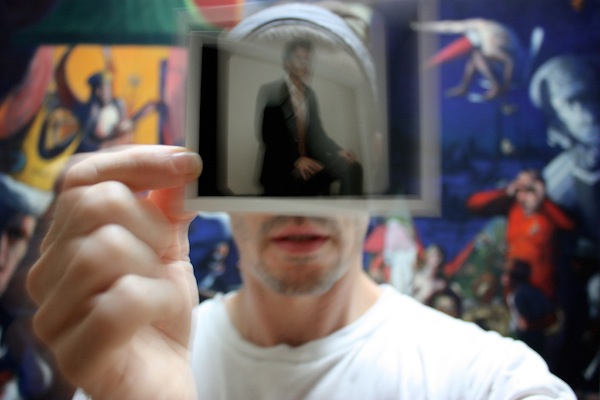
Elbow-Toe/Brian Adam Douglas is a Brooklyn-based artist who has been creating introspective urban art for several years. His street art is grounded in myth, symbolism and poetry and is primarily executed in woodcut, stencil or large-scale charcoal drawings. By studying the act of human gesture as communication, Elbow-Toe utilizes public spaces as stages to house these private moments. His highly acclaimed gallery work focuses on portraiture and abstract narrative and is now primarily executed in collage. At first glance, these intricate collages might be mistaken for paintings as that they have a fluidity rarely seen in collages.
Elbow-Toe recently took some time out to talk to us here at Vandalog for this exclusive interview.
This is Part 1 in our two part interview with Elbow-Toe. Part 2 will be published later this week.
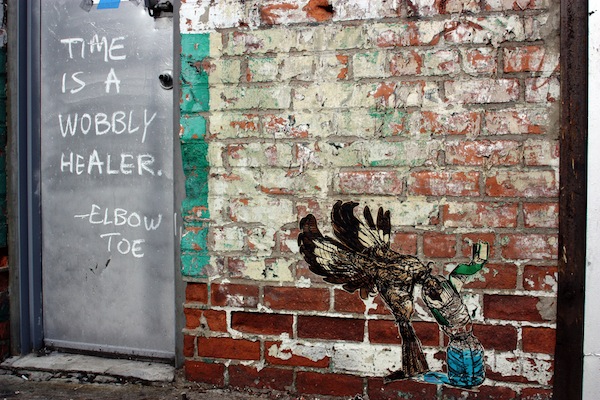
Why do you think you became an artist? Can you remember any defining moment in your life that ultimately shaped your career today?
My interest in art became solidified by my parents’ divorce. My parents divorced when I was 13 and I eventually moved from a community where I was very social and well respected in my school to a new town with very competitive schools. I had always had an interest in art, and it became an outlet in which to pour all my teenage angst. My junior year of high school I got accepted into a commercial art class that lasted 4 hours a day. I really think that this was the defining moment in my artistic pursuit. I was so determined to excell that I would pull at least 2 all night work sessions per week on my projects for the class. I gave as little as I could to all my other classes. This is where I developed a work ethic that I still carry to this day. It served to help me carry my art with me through several years of full time work. All the while I maintained a healthy art production of at least 40 hours a week on the side.
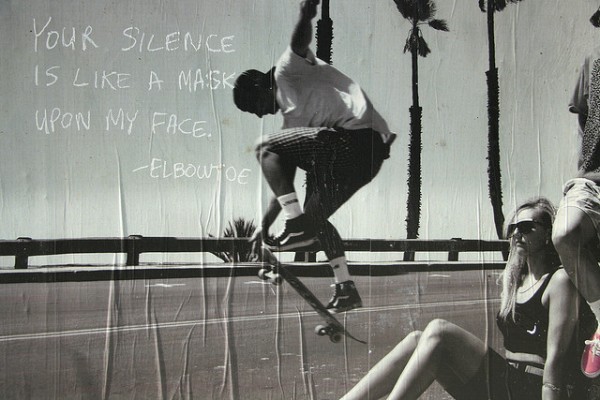
What is your opinion on graffiti art?
I am fascinated by the act of traditional graffiti. Artistically I believe that there is a HUGE amount of technical brilliance going on in a lot of that type of work, and that definitely grabs my attention. I am also very interested in the way that traditional graffiti imposes itself on its environment. I am constantly floored by writers that get up high. I have a horrid fear of heights and it just blows my mind that not only do they go out on that limb by climbing, and then leave their mark to boot.
If we are talking about graffiti art that is predicated on a concept or carries some sort of message, more often than not in a figuratively, then I feel the way I do about any other art form. There is good work, and there is bad work. I personally am attracted to work that asks more of me than to be impressed by technical brilliance. In particular I like work that causes me to have an emotional response or to really think. I like work that transforms the space. I am not talking about dominating the space by making it big. That’s impressive but it doesn’t do much for me personally in most cases. Rather I am interested in work that makes the environment richer for it being there. I would here point to someone like Dan Witz and his skateboarders.
I am also all in favor of illegal works over legal murals. I just find the act more interesting when there is some sort of deviance involved.
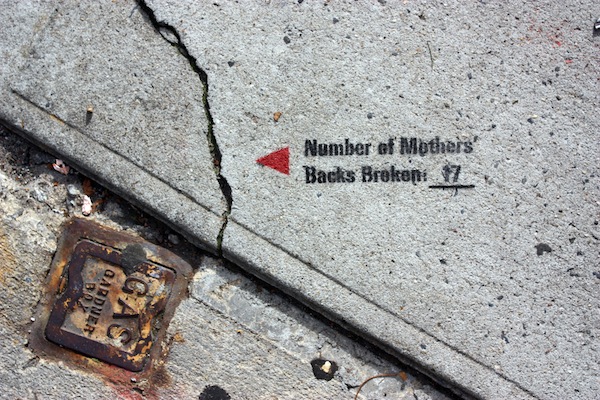
How do you intend or expect for people to react to your work?
My goal with the work is for it to resonate beyond the moment the viewer sees it on the street. I would hope that there is at least a glimmer of humanity that they can hold on to, and preferably at some point down the road it still means something to them. I hope that it defines the spaces that it inhabits so that they can’t think of the space without the piece, and can’t remember the environment before the piece was there. I try to interject a lot of wit into the work that may not be right in your face. I hope that it makes them smile and then think.
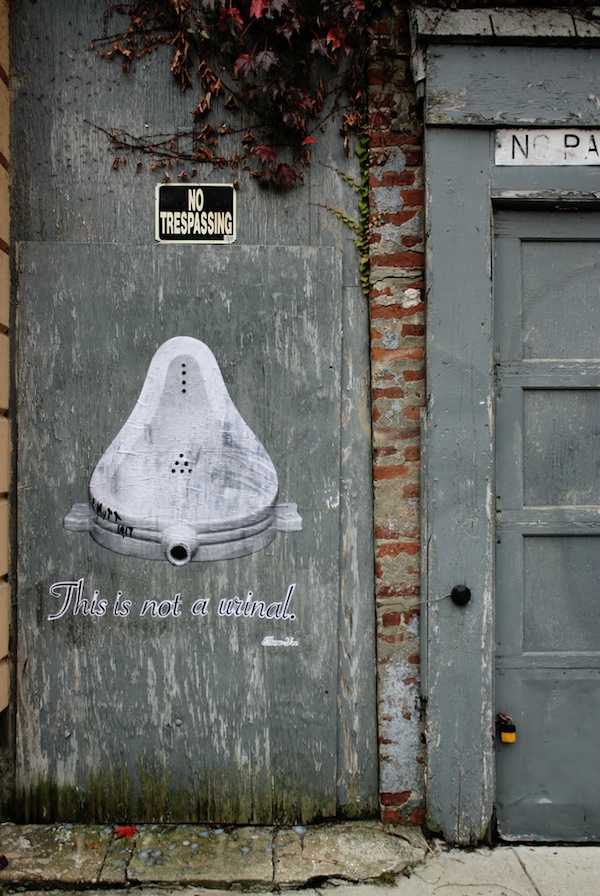
Like most street artists, you’ve decided to work under an alias. But you also work under your real name to. What are the pro’s and con’s of putting your work out there under both your real name and alias?
Who says it’s my real name?
When I started working as a street artist, I never really believed that I would make any money from it. It was a purely artistic outlet, sans commerce. My goal in using one name for the streets, and one for the gallery is an attempt to separate the two practices. I would like to have the ability to pursue my life long goal of earning a living from my art, while at the same time having the freedom to create work that is meant to be experience outside of a marketplace. Same creativity, different goals.
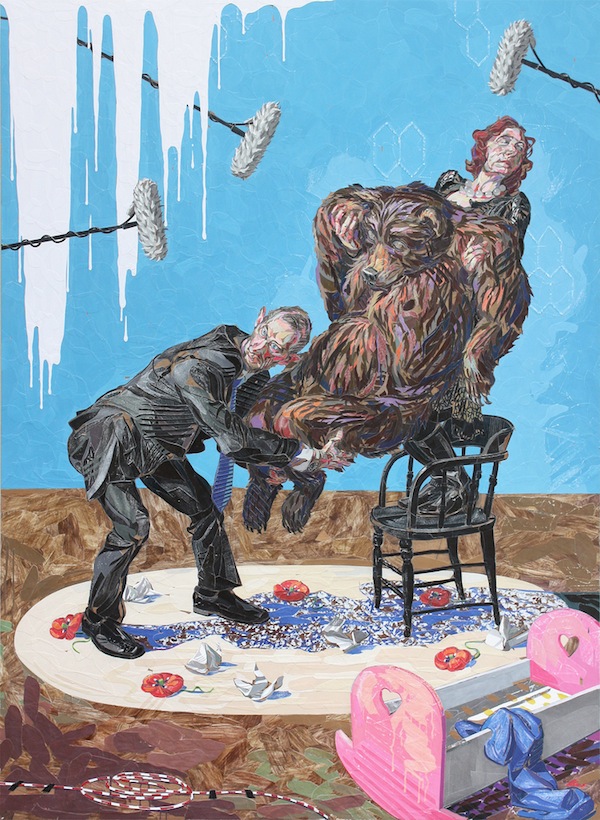
You’ve also created some very intricate and detailed collage and mixed media pieces. Can you summarize the process you go through when making one of these?
The technical process has many of the same roots that all the other work I do has. I take very detailed reference, or in the case of some animal work I do a lot of research trying to get as many views of the same actions as possible. With the animals in the pieces I research their anatomy, and with the flora I try to fully understand the geometry of the flowers. I translate all of this on to panels and more recently paper using vine charcoal. The drawings are rather detailed, and tend to serve as a roadmap. I have several boxes of paper that are separated in to major color motifs. I will comb through them to get a basic palette of paper to work with. I then just attack the image as if I was painting, but I get my colored marks from the magazines. I try to translate each mark as a description of form, as a distinct idea, so that the marks curve and twist around the objects I am working on. I then glue it down with acrylic gel medium. As soon as I glue on the first piece of paper, every other mark becomes a reaction to it.

Be sure to check out more from Elbow-Toe by visiting his official website here.
Photos by Elbow-toe and Sabeth718
